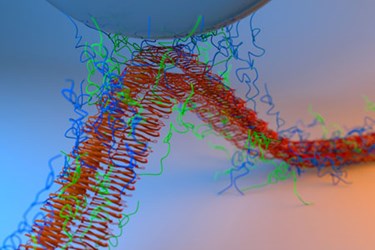Mussel Protein Enables Powerful Medical Adhesive
By Chuck Seegert, Ph.D.

Mussels have inspired the biomimetic development of marine- and medical-grade glues for some time and with some success. New research from the Massachusetts Institute of Technology (MIT) has taken things further by developing a wet-dry adhesive that’s even stronger than those seen in nature.
The attachment of barnacles and mussels to just about anything that stays in the water has long been a bane of marine engineering. Attempts to understand the ability of marine shellfish to bond to nearly any surface has been prompted by a desire to prevent it from happening. Conversely, other researchers have seen this behavior and made an effort to mimic it for biomedical applications like wound closure.
“A lot of underwater organisms need to be able to stick to things, so they make all sorts of different types of adhesives that you might be able to borrow from,” said Timothy Lu, an associate professor of biological engineering and electrical engineering and computer science (EECS) at MIT, in a recent press release.
The glue that mussels use for adhesion is composed of many proteins, which are grouped together into a subset called “mussel foot proteins,” according to the press release. Apparently, the diversity of these proteins allows mussels to stick to many different types of surfaces.
The specific proteins the team chose for their project included mussel proteins, along with a portion of slimy biofilm proteins created by bacteria. Using combinations of the so-called mussel foot protein 3, mussel foot protein 5, and amyloid fibers from E. coli, the team was able to generate self-assembling protein aggregates with very interesting properties.
“The result is a powerful wet adhesive with independently functioning adsorptive and cohesive moieties,” said Herbert Waite, a professor of chemistry and biochemistry at the University of California at Santa Barbara who was not part of the research team, in the press release. “The work is very creative, rigorous, and thorough.”
Using atomic force microscopy, the team probed a number of substrates and found very strong adhesive properties. The new combination adhesive was stronger than each of its components alone and was up to 1.5 times stronger than any other bio-inspired, protein-based adhesive currently available, according to the study.
The new adhesive was manufactured using E. coli bacteria that had been genetically altered. It is not yet a high throughput method, however, so the team is trying to understand how they can increase manufacturability and produce larger quantities, according to the press release.
Specific proteins and details of the team’s work are published in a study in Nature Nanotechnology.
Using glues for wound closure applications is a promising part of biomedical research. Some teams use novel nanoparticles to bond skin surfaces together. On other fronts, bio-inspired glues are used to bond cardiac tissues for closure of congenital heart defects.
Image Credit: Yan Liang
